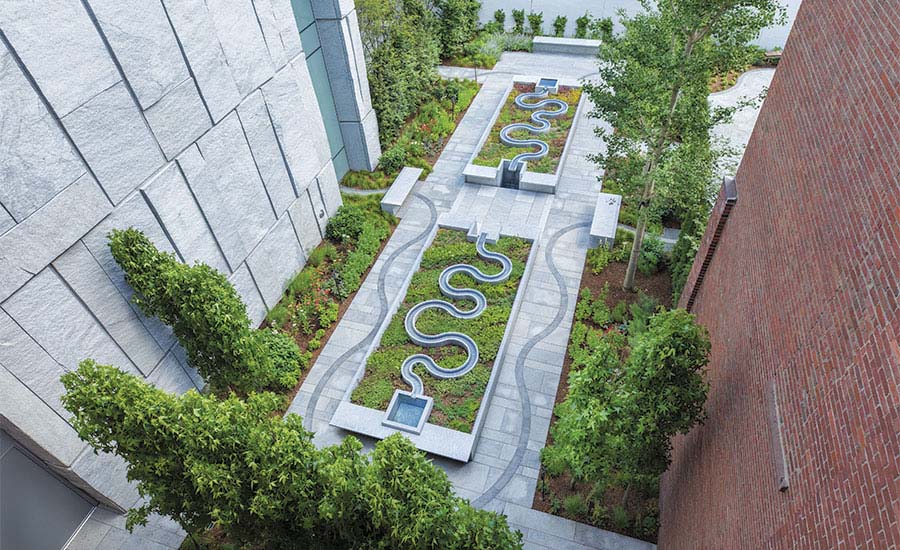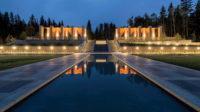The Peabody Essex Museum in Salem, Massachusetts, has history as rich as the artifacts it houses. Over the centuries, the institution has occupied a number of buildings on the site, notably a 2003 extension by Moshe Safdie. In the most recent chapter of the museum’s story, a new expansion includes not only additional gallery space by Ennead Architects, but also an adjoining 3,700-square-foot formal garden by Nelson Byrd Woltz Landscape Architects.
The museum was founded in 1799, as a center for members of the East India Marine Society—namely captains who had sailed Eastward to Asia—to display artifacts procured during their travels. After several mergers with other regional museums, today the Peabody houses extensive maritime, American, and Asian art collections. For its landscape design, Nelson Byrd Woltz drew inspiration from this “cross-pollination of cultures,” says senior associate Mark Streiter, and translated it into the museum’s horticulture.

Photo © Bob Packert, click to enlarge.
The manicured garden—which was previously a parking lot and shares walls with the old and new buildings—is divided into three distinct sections, separated by hedges, that correspond to the cultures represented within the galleries. One area is dedicated to regional specimens from the Northeastern United States, including Christmas ferns, while another incorporates Asiatic plants, such as painted lady ferns and Japanese witch hazel. But, Streiter notes, there are plants that are native to both continents (like the rhododendron and sedum varieties, for example), so they added a convergence garden in the center for these species.
Embedded throughout the granite-paved courtyard is a sinuous ribbon, hewn from a darker version of the locally sourced stone, that meanders through each of these areas, enticing visitors to follow its path through the different sections.
The curve underfoot is echoed in two water features, suggesting the museum’s maritime history and the local landscape: a water wall in the North American garden and the “poetry fountain” in the “hybrid” area. Originating from two source basins at either end of the fountain, water flows through a serpentine channel and converges in a central basin symbolizing a melding of cultures, says Serena Nelson, associate at the firm. “The garden is all completely custom-built around the museum’s story,” she says. “It isn’t just a stage for a few art pieces, like other museum gardens.”





Post a comment to this article
Report Abusive Comment